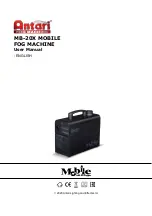
38
Corded Buttonhole (StretchFabrics)
When sewing buttonholes in stretch fabrics we recom-
mend cording the buttonhole to increase the stability
and to keep the buttonhole from stretching out.
1. Loop a piece of heavy thread or perle cotton over
the fi nger at the back of the Buttonhole Slider
Foot C.
2. Stitch a buttonhole. Do not hold back the cord.
The satin buttonhole columns will stitch over the
cord.
3. When the buttonhole is fi nished, lift the cord off
the fi nger and pull out the slack.
4. Cross the cord in front of the needle and thread
cord ends into a large needle, pull to the wrong
side and knot ends before cutting excess.
5. Use the seam ripper to carefully open the
buttonhole.
SEWING ON BUTTONS
Sew buttons, snaps, hook and eyes quickly with your
sewing machine. Use the multipurpose tool to create a
thread shank.
1. Select sew-on-button stitch 1:09.
2. Snap off the presser foot and lower the feed teeth.
3. Place the fabric, multipurpose tool and button under
the ankle with the holes in the button lined up with
the swing of the needle. Check the swing of the
needle by turning the handwheel and making sure
that the needle does not hit the button.
Note: The recommended width of 3.0 is set for most buttons. If
you sew a tiny button or a very large coat button, decrease (–) or
increase (+) the stitch width until the swing of the needle sews in
the holes of the button or snap.
4. Press the foot control. The sewing machine will
sew the button in place, make a fi x and then stop.
5. Raise feed teeth and remove the fabric.
Note: Place the thin end of the clearance plate under the button
when sewing on light fabrics. Use the thick end for heavier
fabrics. Hold in place on the fabric with transparent tape.









































